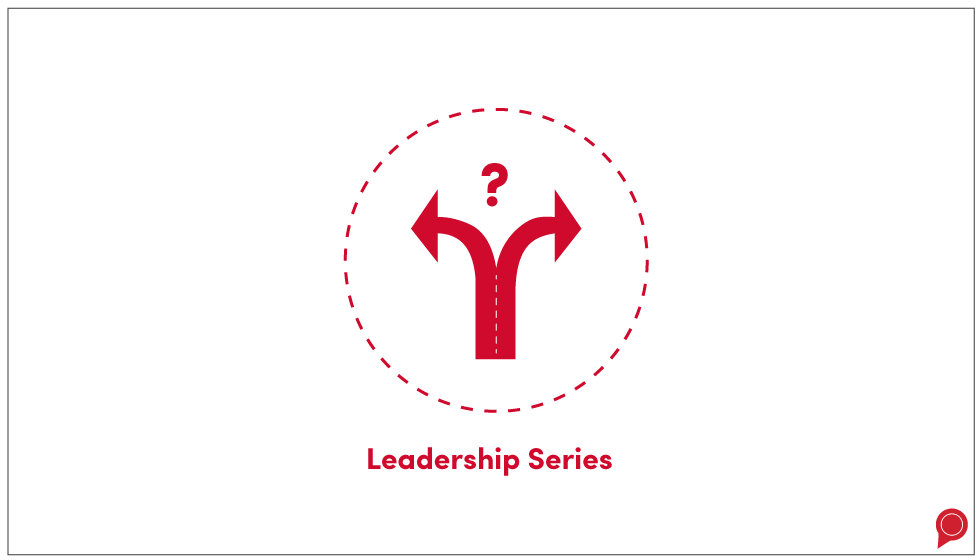

“You put your left arm in, your left arm out. In, out, in, out. Shake it all about.”
For Christmas 1981, I received my first ever 45 single. It was the Hokey Cokey by The Snowmen with a wonderful picture of four snowmen on one side, and all the dance move directions on the opposite side.
At age seven, this was a big deal (I guess it was the Baby Shark of my generation)!
At a recent meeting I attended, the speaker used the Hokey Cokey as an illustration of how we can allow the world to do a "dance" with our focus and attention.
The example brought a wistful smile to my face, but the point hit home with me when I reflected upon the real need we have as leaders to make time for deep thought.
Certainly, leaders need to be able to provide quick decisions in the day-to-day of our roles — if well placed, these will help remove roadblocks for our teams.
However, an absence of deeper thought robs us of the opportunity to see the bigger picture and connect strategic dots that the daily whirlwind denies attention to.
Deep thought is not automatic; interruption and distraction prevent us from accessing the bandwidth needed for deep thought.
In a world purposely wired for distraction, interruption and the assimilation of second-hand thoughts, we face an uphill battle to carve out that essential time where we make meaningful decisions for our businesses and teams.
In tackling the challenge, there have been three approaches that have been helpful in doing a better job at making time for thought:
Let's talk about each one in detail:
1. Tracking
Anyone who has strived to lead a healthier lifestyle knows the benefit of tracking your eating and exercise habits. The awareness and discipline are springboards for better decisions.
The same concept is true for tracking our "attention habits" and specifically the biggest culprit of all — cellphones.
In his book The Digital Diet, Daniel Sieberg, a former Marketing executive at Google, outlines the need to assess your "virtual weight" and how much digital content you are consuming.
With a limitless digital buffet at our fingertips, the temptation to binge is high.
Tracking your screen time and consumption of digital content while easy, can be quite condemning when it becomes clear how much of our day is spent there.
The opportunity lies in identifying how much of that time do you really need to be productive?
Tracking and reordering this time has the potential to provide meaningful chunks of your day where you can set down your phone and boost your productivity through thought.
2. Training
Once we have started tracking, training ourselves to create windows of opportunity for thought is key.
A recent change in my commute resulted in needing to drive country roads to work rather than the chaos of the freeway.
The impact of this was illuminating! Turning off the radio and thinking through items of importance was both productive and relaxing.
Our brains are wired for nature (check out The Nature Fix by Florence Williams for the research in this area), and as a result, when we can carve out more time in "natural" environments, the thought patterns are utterly transformed (just make sure your phone is turned off).
While some of us don’t have easy access to nature in our city-based lives, the opportunity to create thought windows can still happen.
A recent lunch with an executive revealed a wonderful habit where the executive always brought a notebook and pen to lunch. The productive habit was to use the notebook to jot down thoughts on strategic priorities before ever accessing the phone.
Even this small window of time yielded a different level of thought.
Good training requires discipline, but it's worth it!
3. Triggers
The best leaders leverage passion, energy and drive to deliver results over time.
Superior leaders are able to weave in triggers that provide time for clarity of thought in the heat of the moment.
The CEO of an insurance company had a large paperweight with the word think strategically placed on his desk. Frequently in meetings, he would point to the paperweight to allow the group to pause and break out of a non-productive thought pattern.
Over time, this was a trigger that needed no explanation for those attending meetings with him.
These triggers don’t have to be tangible items but can be phrases that reset our thinking.
Early in my career, I worked for a wonderfully composed leader named Stavros, who led an animated and passionate group of leaders.
Meetings would get heated and off-track, but Stavros would speak up and say "let’s take a step back for a moment" — this phrase acted as the trigger for the leaders to take a breath and think differently.
Final Thoughts
Tracking, training and triggers are simple yet effective tactics we can use to liberate us from the mental Hokey Cokey that consumes our days as leaders.
The question is, will we take the time to stop dancing and change the song?
Subscribe to our email list to get the latest digital marketing content delivered to your inbox each week!